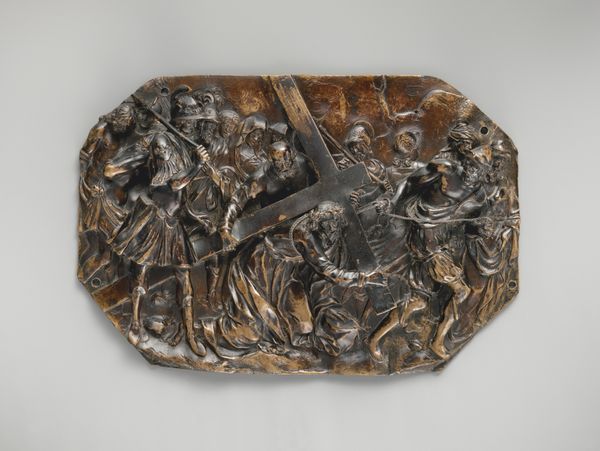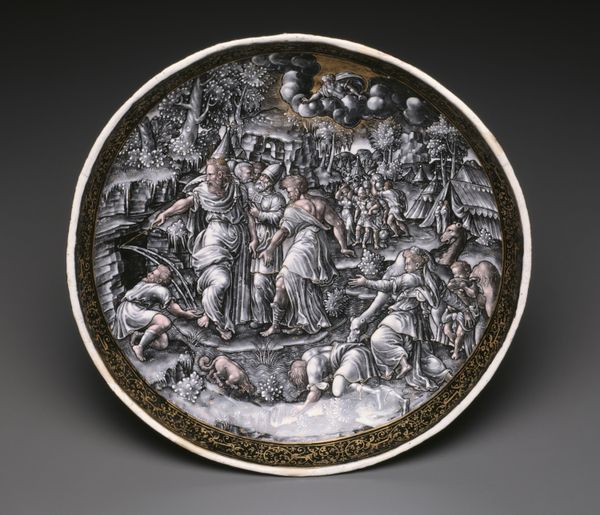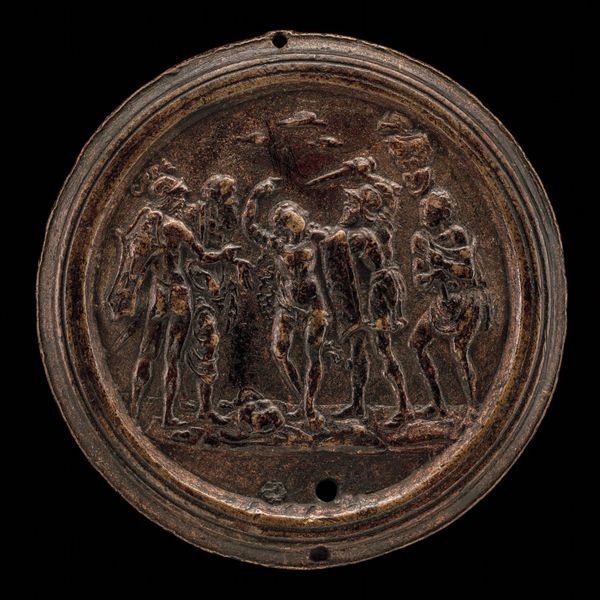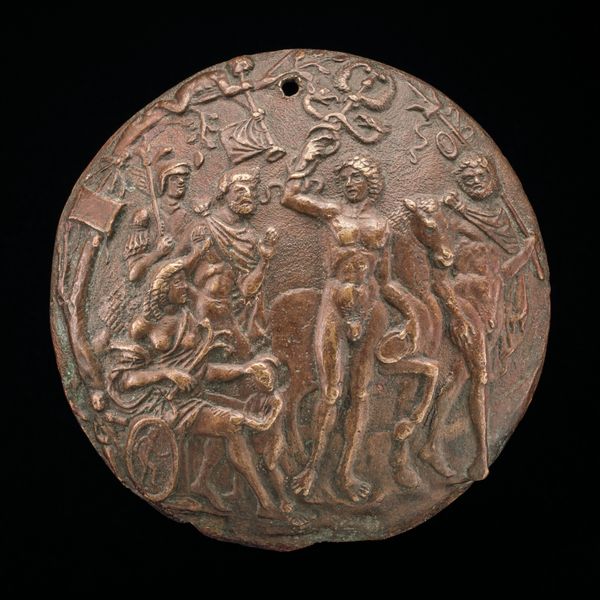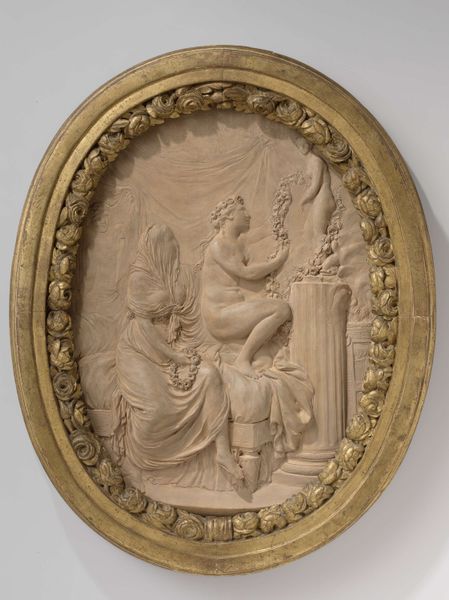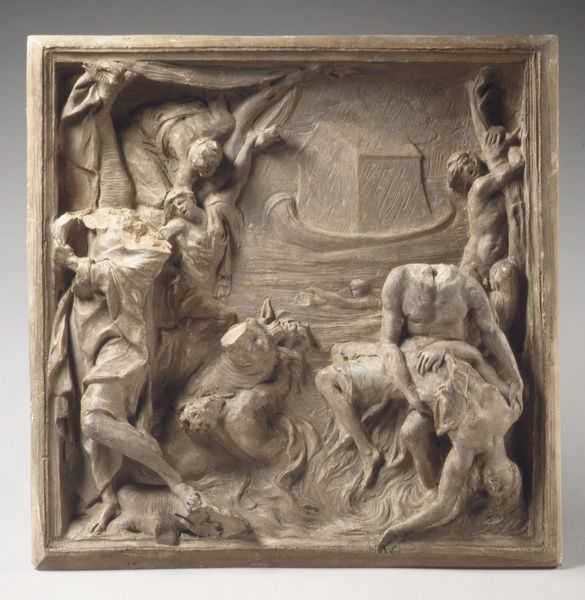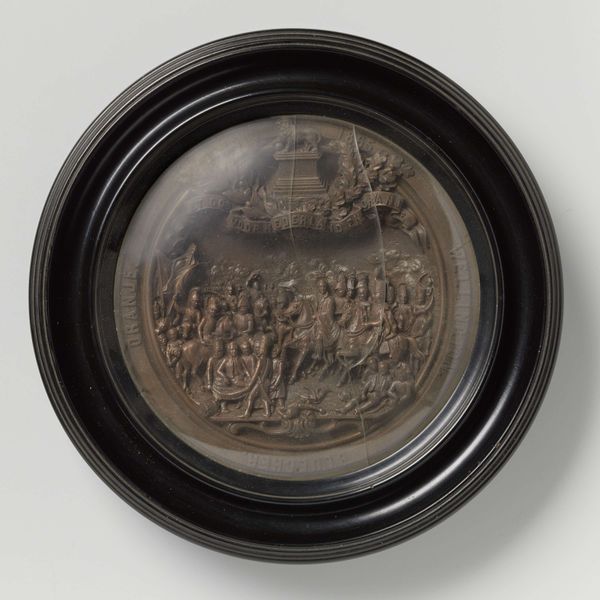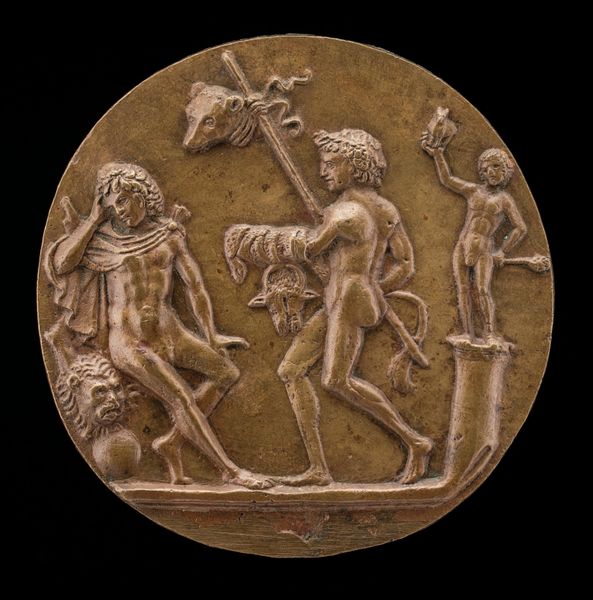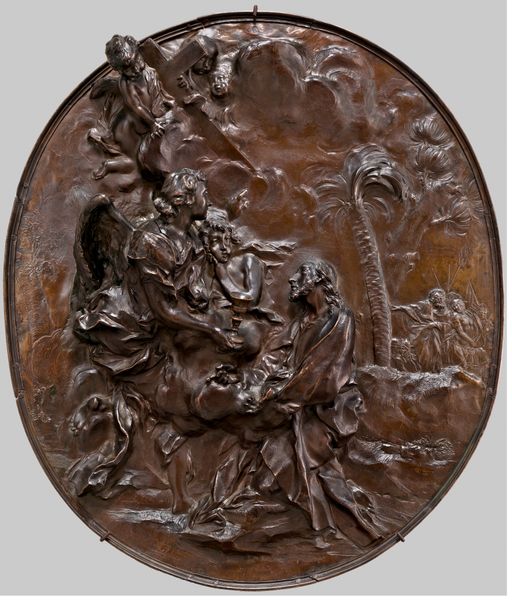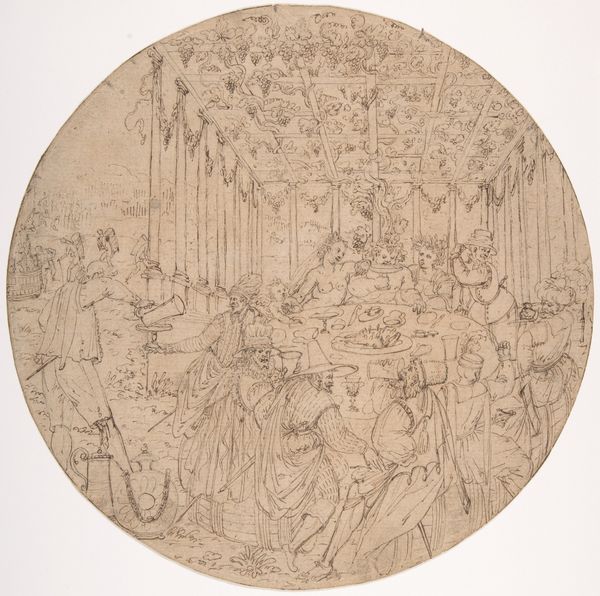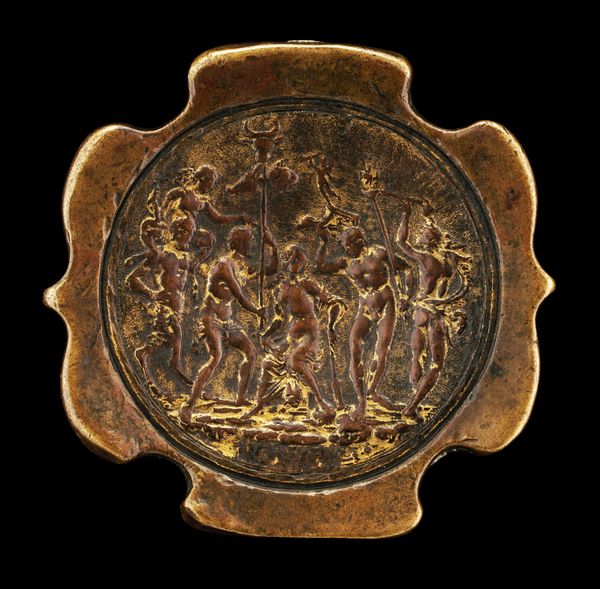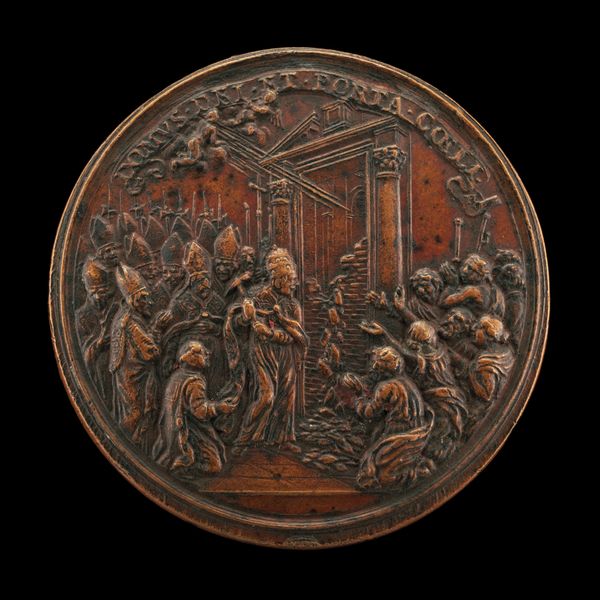
carving
#
natural stone pattern
#
wood texture
#
carving
#
pottery
#
stone
#
sculpture
#
sculptural image
#
unrealistic statue
#
stoneware
#
wooden texture
#
statue
Copyright: Public domain
Editor: Here we have Giambologna’s "Il Cinquecento a Firenze," dating back to 1598. It's a terracotta carving, framed in marble. The craftsmanship is astounding; the details so fine. How do you even begin to interpret such a piece? Curator: One must attend to the formal elements, stripping away preconceived notions of narrative. Notice the circular composition, contained yet dynamic. The relief carving establishes layers, a foreground teeming with activity and a receding background. The artist masterfully exploits the material, using light and shadow to create depth and texture. Editor: So, less about what's happening in the scene, and more about how it’s depicted? Curator: Precisely. Observe the meticulous detail of the figures – the drapery, the musculature. How do these formal qualities contribute to the overall aesthetic effect? Is there a rhythm, a harmony? And note how the marble frame serves to isolate and elevate the composition. Editor: The circular shape makes me feel like I’m looking through a porthole to another time. What strikes me is the way Giambologna directs the viewer’s eyes into and around the composition, maintaining our interest across all parts. Curator: An astute observation. The dynamism and containment work to resolve each other, yielding formal closure. Is it this very tension and resolution that creates the sublime nature of the piece? Editor: I think understanding the elements that compose the whole really elevated my understanding of how to look at a sculpture. It isn’t just a scene, it’s a meticulously constructed visual experience. Curator: Indeed. By focusing on these internal relationships, one transcends mere representation and enters the realm of artistic intention.
Comments
No comments
Be the first to comment and join the conversation on the ultimate creative platform.
